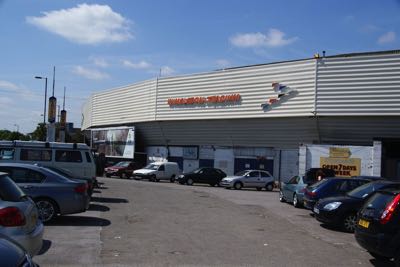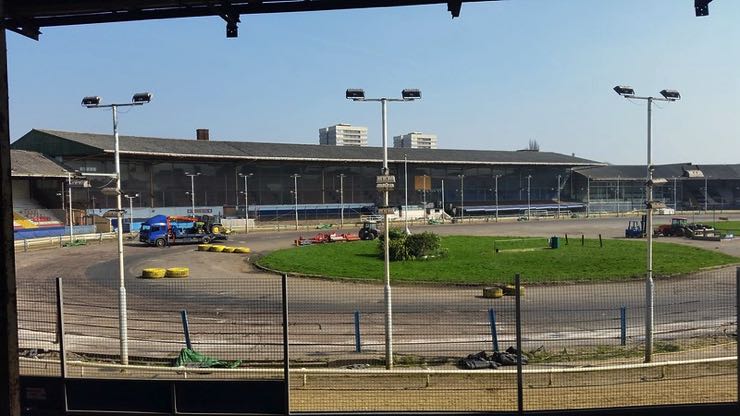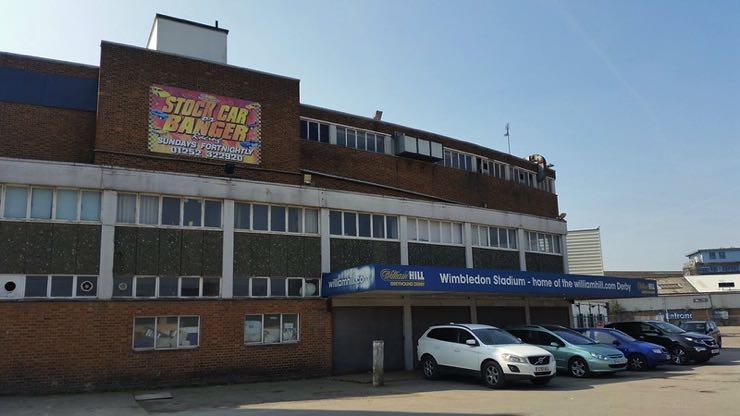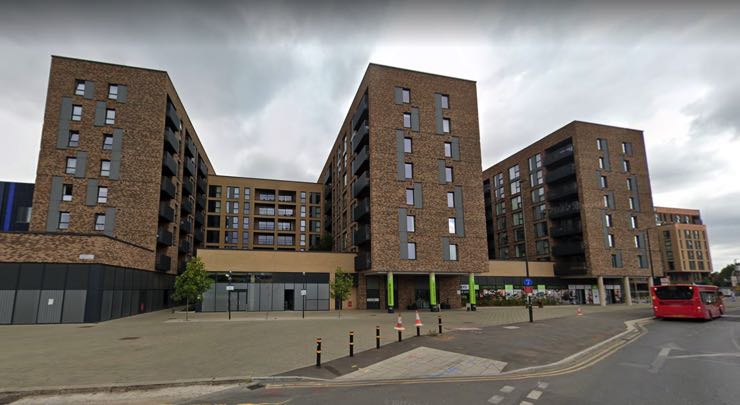
Britain’s once thriving greyhound industry has taken several hits during the current century, resulting in a seemingly ever-expanding list of tracks being forced into closure. Nowhere has this loss been more greatly felt than in the capital city of London. Previously, the nation’s bustling dog racing hub, London is now home to just two race tracks, something that would have been unthinkable back in the 1970s and certainly very unlikely at the turn of the century.
Of those venues to have fallen by the wayside, easily the highest profile is Wimbledon Greyhound Stadium. One of the first tracks on the scene when initially opening for business back in 1928, the southwest London venue had acted as the home of many of the most prestigious contests on the calendar, including the biggest of them all – the Greyhound Derby. However, even the most illustrious of histories is no guarantee for future success, and in 2017, one of the most famous tracks in the sport closed its doors for good. Here we take a look at the history of the track, and the events that led to its sad demise.
Former Greyhound Racing at Wimbledon

Plans for a new greyhound stadium in the Merton area of London first came into place in the mid-1920s with the establishment of South London Greyhound Racecourses Ltd. Selecting a patch of land to the east of the River Wardle, building works soon commenced, with plans to open in 1928.
1928: Opening Night
Trouble wasn’t long in appearing though, with South London Greyhound Racecourses Ltd running into financial difficulties before the construction phase had even been completed. Initially, it seemed as though the project would fail to get off the ground at all, but the development was rescued by Bill Cearns – the man at the helm of the company contracted to undertake the building of the stadium. With the additional funds supplied by Bill Cearns, the project was able to stick to its original schedule and held its opening night on the 19th of May, 1928.
First Track to Use Weighing Scales
Entering the record books as the first UK track to use weighing scales, Wimbledon also quickly made its presence felt on the racing calendar via the introduction of several top-class contests. These included the International, the Puppy Derby, Wimbledon Gold Cup and Wimbledon Spring Stakes.
Mick The Miller
Just one year into its operation, Wimbledon then became the focus of the racing world, when the most famous dog in the history of the sport, Mick The Miller, took up residence at the stadium. This all-time great managed to win back-to-back Greyhound Derby’s during his time at the track and contributed significantly to the bumper attendances at the time. The Mick The Miller factor saw the programme improve still further with the addition of The Key, Laurels and Two Year Old Produce Stakes.
Despite suffering bomb damage during WWII, the track continued to race during the global conflict. Quick to restore the damage, a new grandstand was built upon the ceasing of hostilities and the track continued to thrive, as did the sport.
The Track Survives a Downturn
However, a downturn wasn’t far off and into the 1960s the track witnessed a steady drop off in trade, to the extent that by 1969 rumours were rife that the stadium may be sold to keen housing developers. That fate was avoided when the GRA stepped in to purchase a significant share in the stadium, before ultimately buying the it outright in 1972. Six years later the track gained a place in popular culture when featuring in Queen’s music video for their song “Bicycle Race”.
Back on a firm footing, Wimbledon became one of the first tracks to introduce the now ubiquitous grading system during the 1970s, before receiving a huge boost in 1985 when selected as the new home for the Greyhound Derby following the closure of another London track, White City. Just one year later the bitches’ Classic of The Oaks was also added to the roster as Harringay followed White City onto the scrap heap. Continuing to stage the Derby until 2016, the track was responsible for eight winners of England’s biggest race.
A Promising New Millennium
Further positive developments were to follow during the 90s. 1992 saw turnover receive a welcome boost courtesy of the intertrack betting system, with the additional funds helping towards a £500,000 extension to the Paddock Bar area. With the track then staging its first Sky Sports meeting in 1997 and gaining the Grand National from Hall Green in 1999, all appeared well moving into the new millennium.
Despite all of that progress – in addition to a further £470,000 in investment between 2003 and 2010 – the picture was not as rosy as it may have first appeared…
What Happened to Wimbledon Stadium?

The first indications of significant struggles for the track had come in 2007 when the GRA and all of its assets were put up for sale by the GRA’s parent company, Wembley PLC. The company cited declining attendances and the increasingly dilapidated appearance of sections of the site as the reasons behind the sale.
Declining Attendance Leads to Sale
Later that year, the winning bidder was confirmed to be Gallard Homes Ltd, with plans reportedly in place to build a 600-apartment complex, in addition to a new home ground for AFC Wimbledon who had historically been based in the Merton locale.
Fast forward to December 2015 and the planning permission for the housing and stadium proposal was greenlit by the London Borough of Merton. A last gasp rival bid from Shelbourne Stadium owner Paschal Taggart, who wanted to build a new £20m greyhound stadium, came to nought, as did an appeal to grant the existing stadium Listed status.
2018: Demolition Begins
Staging its final meeting to a sell-out crowd on the 25th of March, 2017, the track was closed to the public following the conclusion of that fixture, with the demolition squad moving in on 16th March, 2018. With that closure, Romford and Crayford are now the only officially licenced greyhound tracks within the capital city.
The Current Site

Having provided the stage not only for greyhound racing but also speedway and stock car events, Wimbledon Stadium was much missed at the time of its closure. However, unlike some other now-defunct tracks, the site has at least been put to good use.
Following through with the initial plans, Gallard Homes Ltd have built an impressive 600-apartment complex on the site. The most impressive landmark, however, is the newly built Plough Lane football ground that provides a modern and well-attended home for AFC Wimbledon.